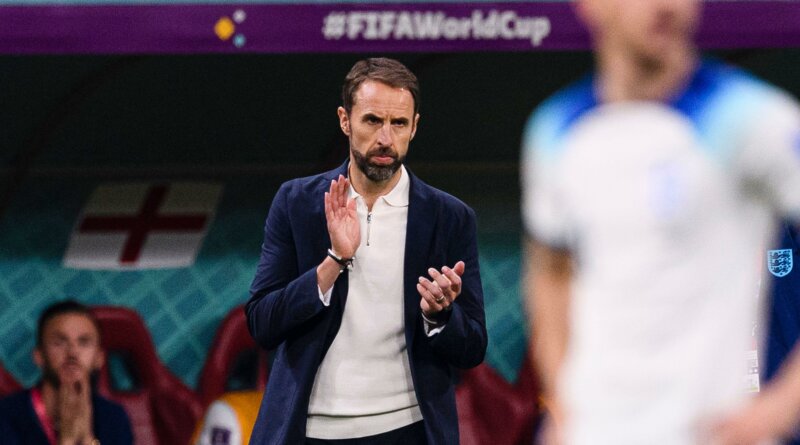England 6-2 Iran – How the goal-fest in Doha compares to previous opening day tournament performances under Southgate

Plenty of familiar faces, but a refreshingly unfamiliar performance . . . England’s six-goal stroll against Iran was a world away from other opening-day displays in major tournaments under Gareth Southgate.
Yes, this was a third straight win for Southgate in the first group game of his third major tournament in charge.
But those previous two victories were both by only the odd goal, and neither saw England throw Southgate’s infamous caution to the winds.
Six of the starting XI from the team which kicked off the 2018 World Cup with a 2-1 victory over Tunisia were involved today against Iran.
But while England were ruthless as an attacking unit in Doha, they were dependent on one man – Harry Kane – for a nervy win against the Tunisians.
The question is: will the difference in formation between those two victories prompt Southgate into a permanent change of tactics.
Southgate went with four at the back against Iran, and effectively three men in attack, whereas the win over Tunisia showcased his more tried and tested system of three centre-backs, wing-backs and two up front.
Today, England’s more positive line-up made a massive difference, with Bukayo Saka scoring twice, his replacement Marcus Rashford also finding the net, Raheem Sterling succeeding where he struggled against Tunisia with another of the goals, and Jude Bellingham chipping in with one from midfield.
Ironically, given Southgate’s previous reliance on Kane’s goals to get England up and running at a tournament, the captain’s increasing tendency to drop deep and bring teammates into the game made the side look far more potent.
That is again a sharp contrast to the first game of the 2020 Euros, despite it being less than 18 months ago, and seven of today’s starting XI having also begun that game.
Yes, England faced far tougher opposition that day in their 2018 World Cup semi-final conquerors Croatia.
But even though Southgate again went against his instincts in choosing a flat back four, his safety-first approach of playing two holding midfielders resulted in a relatively cagey game.
Unlike against Tunisia, Sterling was England’s best attacking player and scored the game’s only goal.
And Southgate might point to Croatia rarely threatening an equaliser as proof that his cautious midfield formation was a sensible move.
But, Sterling apart, England rarely hit the attacking heights at Wembley that day as they did against Iran, with Kane particularly subdued.
The question now is whether Southgate – with tougher tests ahead – keeps his men off the tactical leash, or reverts to his type.
There’s little doubt what the vast majority of England fans would prefer.
By Dylan Richardson and Marlind Ymeri




